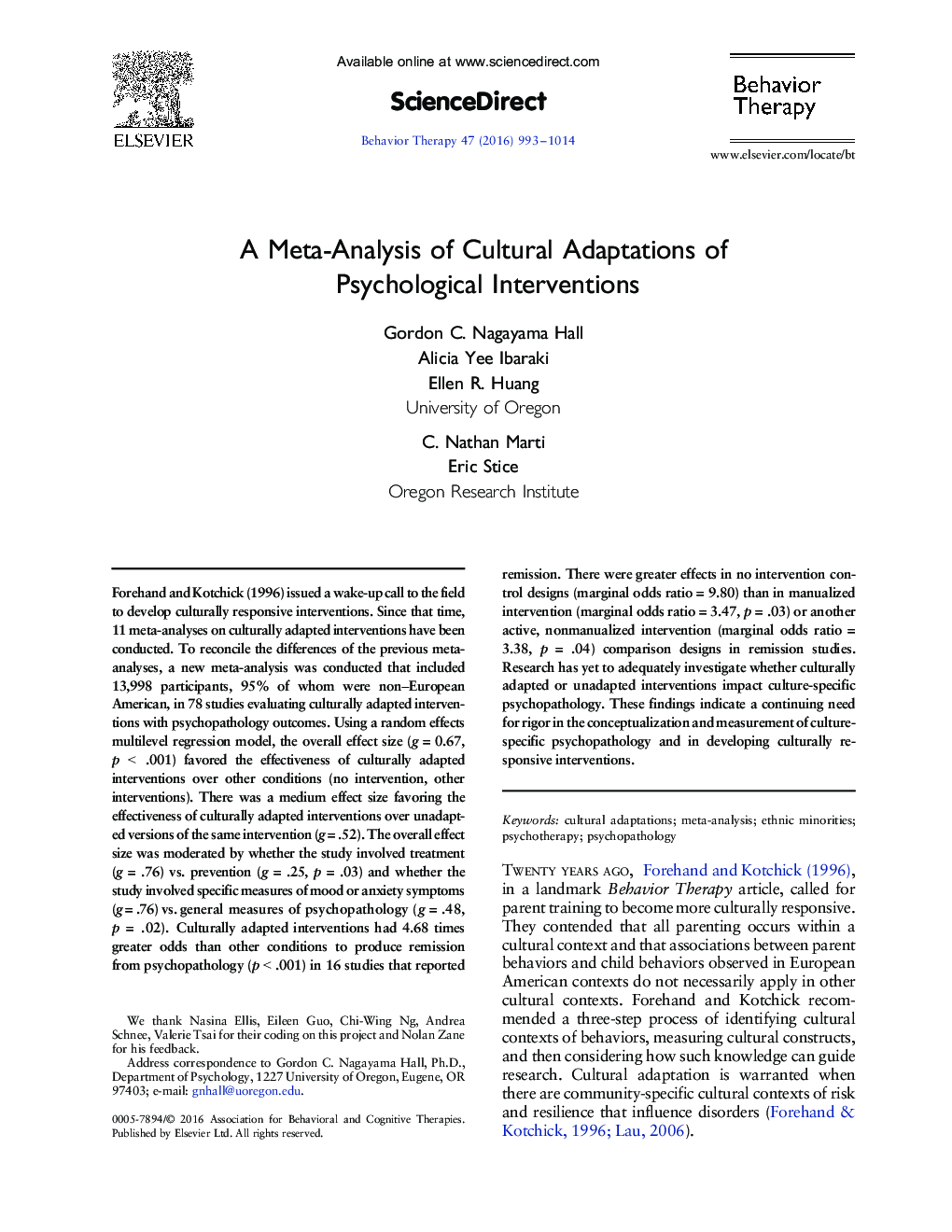| Article ID | Journal | Published Year | Pages | File Type |
|---|---|---|---|---|
| 5038012 | Behavior Therapy | 2016 | 22 Pages |
â¢We conducted a meta-analysis of culturally-adapted psychological interventions in 78 studies on psychopathology outcomes.â¢The overall effect size favored the effectiveness of culturally adapted interventions over other conditions (no intervention, other interventions).â¢There was a medium effect size favoring the effectiveness of culturally adapted interventions over unadapted versions of the same intervention.â¢Studies that involved treatment yielded larger effect sizes than studies that involved prevention.â¢The effects of culturally adapted and unadapted interventions on culture-specific forms of psychopathology are yet to be determined.
Forehand and Kotchick (1996) issued a wake-up call to the field to develop culturally responsive interventions. Since that time, 11 meta-analyses on culturally adapted interventions have been conducted. To reconcile the differences of the previous meta- analyses, a new meta-analysis was conducted that included 13,998 participants, 95% of whom were non-European American, in 78 studies evaluating culturally adapted interventions with psychopathology outcomes. Using a random effects multilevel regression model, the overall effect size (g = 0.67, p < .001) favored the effectiveness of culturally adapted interventions over other conditions (no intervention, other interventions). There was a medium effect size favoring the effectiveness of culturally adapted interventions over unadapted versions of the same intervention (g = .52). The overall effect size was moderated by whether the study involved treatment (g = .76) vs. prevention (g = .25, p = .03) and whether the study involved specific measures of mood or anxiety symptoms (g = .76) vs. general measures of psychopathology (g = .48, p = .02). Culturally adapted interventions had 4.68 times greater odds than other conditions to produce remission from psychopathology (p < .001) in 16 studies that reported remission. There were greater effects in no intervention control designs (marginal odds ratio = 9.80) than in manualized intervention (marginal odds ratio = 3.47, p = .03) or another active, nonmanualized intervention (marginal odds ratio = 3.38, p = .04) comparison designs in remission studies. Research has yet to adequately investigate whether culturally adapted or unadapted interventions impact culture-specific psychopathology. These findings indicate a continuing need for rigor in the conceptualization and measurement of culture- specific psychopathology and in developing culturally responsive interventions.
